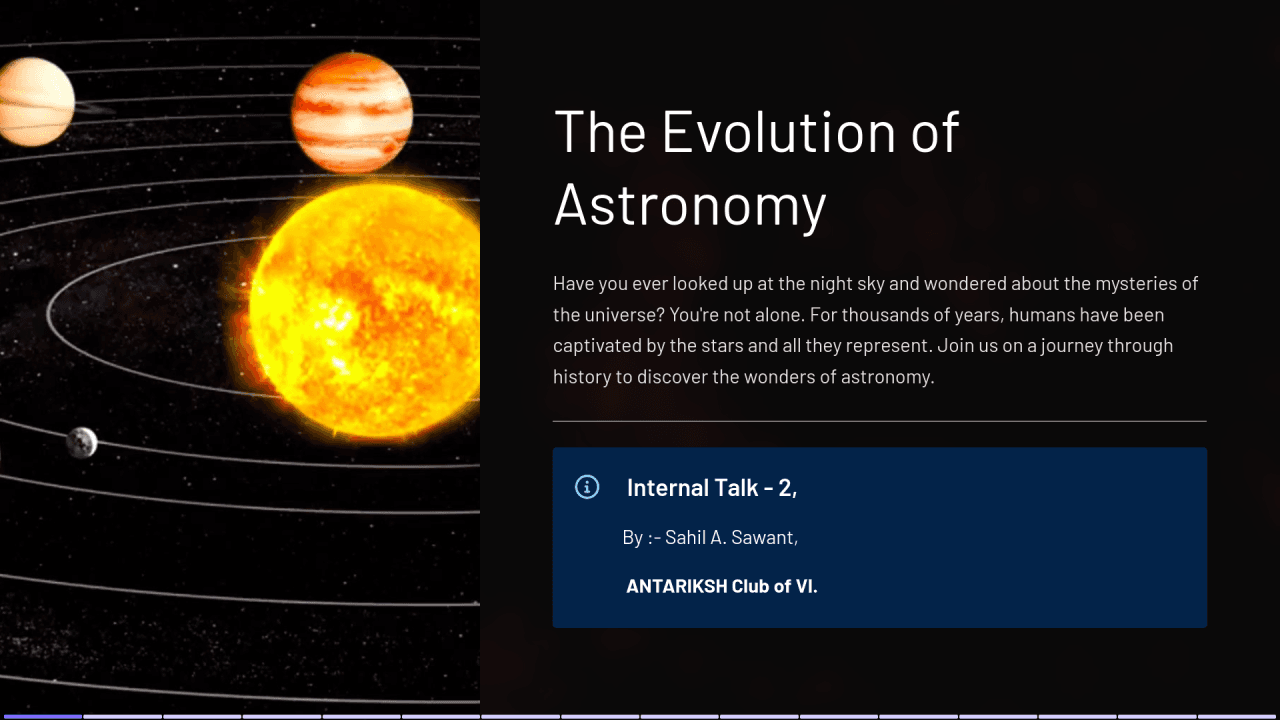The cosmos has always intrigued humanity, and throughout history, we have relentlessly sought to understand its secrets. In a groundbreaking discovery, an international collaboration of astronomers from India, Japan, and Europe has unraveled a new window into the gravitational wave spectrum. This remarkable achievement, made possible by monitoring pulsars using cutting-edge radio telescopes, including India's largest telescope, the upgraded Giant Metrewave Radio Telescope (uGMRT), has shed light on the relentless vibrations of the fabric of the universe caused by ultra-low frequency gravitational waves.

A New Symphony in the Cosmos:
The evidence for ultra-low frequency gravitational waves has led scientists to hear a "humming" of the universe. These waves originate from a multitude of "dancing monster black hole pairs" within colliding galaxies, creating vibrations in the space-time continuum. The precise measurements of the arrival times of pulsar signals, collected over 25 years and analyzed by the Indian Pulsar Timing Array (InPTA) in collaboration with European Pulsar Timing Array (EPTA) and other global partners, have unlocked a new symphony of cosmic proportions.
Official Statements from LIGO, India, and Gratitude to Collaborating Institutions:
Congratulating the InPTA and its collaborators, Dr. David Reitze, Director of LIGO, states, "The LIGO Laboratory congratulates our Indian Pulsar Timing Array (InPTA), European Pulsar Timing Array (EPTA), and other international colleagues on this momentous discovery. It is a testament to the power of international collaborations and the dedication of the scientific community." [1]
India's National Centre for Radio Astrophysics (NCRA), Pune, which operates the uGMRT, played a pivotal role in this discovery. Centre Director Yashwant Gupta expresses his elation, "It is fantastic to see our unique uGMRT data being used for ongoing international efforts on gravitational wave astronomy. Our sincere gratitude goes to all the researchers and institutions involved in this remarkable achievement." [2]
The Tata Institute of Fundamental Research (TIFR), Mumbai, and Indian Institute of Technology (IIT), Roorkee, played significant roles in the InPTA experiment. Prof. A. Gopakumar, Chair of the InPTA consortium and a professor at TIFR, lauds the achievement, "The results presented today mark the beginning of a new journey into the Universe to unveil some of these mysteries. More importantly, this is the first time that an Indian telescope's data is used for hunting gravitational waves." [3]
Expressing his delight, Prof. Shantanu Desai from IIT, Hyderabad, says, "These results have culminated due to years of efforts of many scientists, including early career researchers and undergraduate students. I am proud that we gather our inspirations from pioneers such as LIGO, TIFR, IIT, IISc, and other institutions that have paved the way for such groundbreaking discoveries." [4]
The Power of Collaboration and Global Effort:
The success of this discovery is a testament to the power of international collaborations. The InPTA experiment involved researchers from various Indian institutions, including NCRA (Pune), TIFR (Mumbai), IIT (Roorkee), IISc (Bengaluru), IIT (Hyderabad), IMSc (Chennai), and RRI (Bengaluru), along with esteemed colleagues from Kumamoto University, Japan. It is an Indo-Japanese collaboration that harnesses the capabilities of India's leading radio telescopes.
The uGMRT, upgraded in 2019, has contributed significantly to the ongoing global efforts in gravitational wave astronomy. The international team's findings have set the stage for future research, pushing the boundaries of our understanding of the cosmos.
ANTARIKSH Club: Fostering Astronomy Knowledge and Collaboration:
The ANTARIKSH Club of VI, has been at the forefront of promoting astronomical knowledge among students and discovering hidden talents. The club's commitment to enlightenment extends to organizing Star Parties, Guest Lectures, and volunteering for Scientific roles like Workshops and Exhibitions at IUCAA, Pune.
Inspired by the remarkable achievements of institutions like LIGO, TIFR, NCRA, IIT, IISc, and others, the ANTARIKSH Club aims to work closely with national institutions in the field of astrophysics. By fostering collaboration and providing a platform for young researchers to explore the wonders of the universe, the club aspires to contribute to India's scientific endeavors on a global scale.
Looking Ahead:
The journey into the universe's mysteries has just begun, and the discovery of ultra-low frequency gravitational waves marks a turning point in our exploration of the cosmos. Collaborative endeavors like the International Pulsar Timing Array (IPTA) hold the promise of combining data sets to unlock even more sensitive observations and delve deeper into the enigmas of the early Universe.
As the scientific community celebrates this milestone, young researchers, like Jaikhomba Singha, a senior PhD scholar from IIT Roorkee, express their excitement, "This is an extremely thrilling time for early career researchers. We are witnessing an era where international teams are collaborating to listen to the humming of our Universe. The present results will undoubtedly open a plethora of exhilarating scientific opportunities for us in the future." [3]
Conclusion:
The discovery of ultra-low frequency gravitational waves is a testament to human perseverance, innovation, and the spirit of international cooperation. India's Giant Metrewave Radio Telescope and the contributions of institutions such as LIGO, TIFR, IIT, IISc, and others have played a crucial role in this historic achievement. ANTARIKSH Club, with its dedication to astronomy knowledge and collaboration, stands ready to be part of this exciting journey of discovery. As we delve deeper into the cosmos, let us celebrate the triumphs of science and embrace the enigmatic wonders that lie ahead. The hum of the universe continues to beckon us to explore its mysteries, and together, we shall venture into uncharted realms of knowledge.
References :
[1] : Kimberly M Burtnyk, LIGO Laboratory Writer/Editor. "LIGO Congratulates Pulsar Timing Array Teams for New Gravitational Wave Discovery." LIGO Caltech. [https://www.ligo.caltech.edu/news/ligo20230628]. Published on June 28, 2023
[2] : PTI. (2023, June 30). India's largest radio telescope key to detecting the universe's vibrations. The Hindu. Retrieved [July 30, 2023], from [https://www.thehindu.com/sci-tech/science/giant-metrewave-radio-telescope-gmrt-india-gravitational-waves/article67026398.ece]
[3] : BS Web Team. (2023, June 30). How did scientists hear humming from the Universe and why is it significant. Business Standard. [https://www.business-standard.com/world-news/how-did-scientists-hear-humming-from-the-universe-and-why-is-it-significant-123063000351_1.html].Accessed [July 30th, 2023]
[4] : "Indian Pulsar Timing Array instrumental in global effort to detect gravitational wave background." News9live, 30 Jun 2023, https://www.news9live.com/science/indian-pulsar-timing-array-instrumental-in-global-effort-to-detect-gravitational-wave-background-146512. Accessed [July 30th, 2023].



